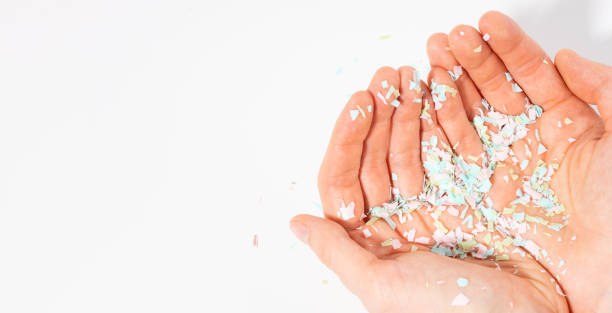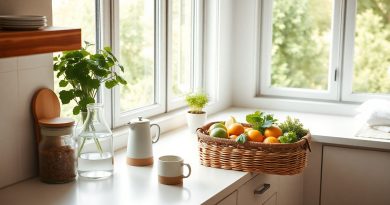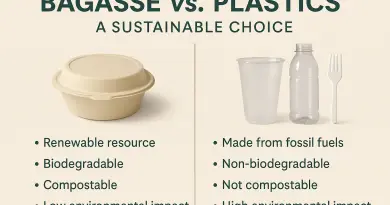The Truth About Microplastics — and How to Keep Them Out of Your Life
Imagine sipping water from a crystal-clear bottle on a sunny day. Now imagine swallowing tiny invisible pieces of plastic with that sip. Unsettling, isn’t it? That’s the reality we’re living in — welcome to the world of microplastics.
While plastic pollution is often visible in overflowing landfills and floating ocean garbage patches, microplastics are much sneakier. These tiny particles — often invisible to the naked eye — are everywhere, from the food we eat to the air we breathe.
But don’t worry — this blog isn’t just about doom and gloom. It’s about awareness, empowerment, and practical ways to protect yourself and the planet. Let’s unravel the truth about microplastics and learn how to kick them out of our lives, one conscious choice at a time.
What Are Microplastics, Really?
Microplastics are plastic particles less than five millimeters in size—about the width of a pencil eraser. They come from the breakdown of larger plastic items, such as bottles, bags, and packaging, as well as from products that intentionally contain small plastic beads, like some cosmetics and cleaning products. Even your clothes and household dust can be sources.
Microplastics are so small that they can pass through water filters, slip into the food chain, and even be carried by the wind. Some are invisible to the naked eye, known as nanoplastics, which are small enough to breach cell barriers.
How Did Microplastics Invade Our Lives?
It didn’t happen overnight. Here’s how they sneaked in:
🌊 In Our Water
Every time we wash synthetic clothes like polyester or nylon, tiny plastic fibers escape into the wastewater. These aren’t filtered out in sewage treatment and often end up in rivers, lakes, and oceans.
🐟 In Our Food Chain
Marine animals ingest microplastics, mistaking them for food. These plastics accumulate up the food chain and end up in seafood — and on our plates.
🧴 In Our Everyday Products
Toothpastes, exfoliating face scrubs, and even glitter often contain microbeads. These are washed down the drain, contributing to plastic pollution.
🧫 In the Air We Breathe
Recent studies show microplastics are airborne. From the breakdown of car tires to household dust, we inhale these particles unknowingly every day.
Why Should We Be Worried?
Let’s be honest — humans are adaptable, but should we really get used to having plastic in our lungs, bloodstreams, and organs?
🚨 Health Concerns
Microplastics may carry toxic chemicals like phthalates and BPA, known endocrine disruptors. These chemicals can interfere with hormonal systems, potentially affecting reproduction, immunity, and development.
Emerging research has found microplastics in human blood, lungs, breast milk, and even placentas. Long-term health effects are still being studied, but the early signs are alarming.
🌍 Environmental Impact
Microplastics don’t biodegrade. They persist in the environment for centuries, harming wildlife, altering ecosystems, and contaminating soil and water.
How to Keep Microplastics Out of Your Life
We can’t avoid them completely (yet), but we can drastically reduce exposure with practical, everyday choices. Here’s how:
1. 🧼 Say Goodbye to Microbeads
Microbeads are tiny plastic particles found in some face scrubs, toothpaste, and body washes.
What to do:
Check labels for polyethylene, polypropylene, or nylon — common plastic ingredients.
Switch to natural exfoliants like walnut shell, coffee grounds, oatmeal, or sugar scrubs.
Choose certified plastic-free personal care products.
2. 👕 Wash Clothes the Eco-Friendly Way
Washing synthetic fabrics releases hundreds of thousands of microfibers per load.
What to do:
Choose natural fibers like cotton, hemp, or linen.
Use a Guppyfriend bag or microfiber filter in your washing machine to trap fibers.
Wash less often and with cold water to reduce shedding.
3. 💧 Invest in a Quality Water Filter
Tap water and bottled water can both contain microplastics.
What to do:
Install a home water filter that’s certified to reduce microplastics.
Avoid bottled water; studies show it often contains more microplastics than tap water.
4. 🍲 Avoid Plastic in Food Packaging and Storage
Plastic wraps, containers, and cutlery can leach microplastics into food, especially when heated.
What to do:
Store food in glass, stainless steel, or ceramic containers.
Never microwave food in plastic.
Choose fresh produce over packaged options.
5. 🧴 Ditch Disposable Plastics
Every plastic item we use has the potential to break down into microplastics.
What to do:
Carry your own reusable water bottle, coffee cup, and cutlery set.
Say no to plastic straws, bags, and wrappers.
Support businesses that use compostable or biodegradable packaging (like Frame Innovative’s sugarcane bagasse products!).
6. 🧹 Clean the Air Indoors
Household dust can contain microplastics shed from furniture, carpets, and clothes.
What to do:
Vacuum regularly with a HEPA filter.
Ventilate your home.
Avoid synthetic textiles in curtains, rugs, and upholstery.
What About Children and Babies?
Kids are especially vulnerable to toxins. Think of all the plastic toys, sippy cups, and pacifiers they use — most of which end up in their mouths.
How to protect them:
Use natural rubber or wooden toys.
Opt for glass baby bottles or BPA-free certified plastics.
Wash baby clothes in Guppyfriend bags to reduce fiber shedding.
Are Governments Doing Anything About This?
Yes, but slowly.
Many countries have banned microbeads in personal care products. Others are working on extended producer responsibility (EPR) laws, requiring companies to manage plastic waste.
However, policy change is gradual. The real power lies with consumers like you. Your choices drive demand, influence brands, and lead to lasting change.
How Frame Innovative Supports Plastic-Free Living
At Frame Innovative, we believe the solution lies in innovation, education, and everyday action. Our eco-friendly product line — from compostable tableware to plastic-free packaging — empowers individuals and businesses to choose sustainability.
By supporting biodegradable, bagasse-based alternatives, you help prevent plastic waste from ever becoming microplastics in the first place.
Conclusion: Small Changes, Big Impact
The truth about microplastics is startling. But it’s also a wake-up call — to rethink how we live, what we buy, and how we care for our planet.
You don’t have to go zero-waste overnight. Start small. Swap out one plastic product for a sustainable alternative. Share what you learn. Inspire others.
Because every conscious choice you make helps keep plastic out of your body — and out of the Earth’s precious ecosystems.
🌱 Join the Movement
Explore our range of compostable, plastic-free products at FrameInnovative.com.
Let’s build a world where sustainability isn’t an option — it’s a way of life.




